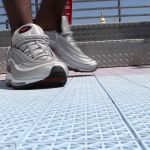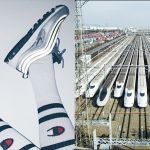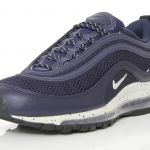
Your Ultimate Guide to Air Max 97
All you need to know on the most iconic sneakers of all time
October 3rd, 2016
It was 1997 when the Nike Air Max 97 – best known as the 'Silver' – were launched on the international market. Since that moment, streetwear was no longer the same: hordes of kids rushed to buy them, and wore them until their soles were completely worn-out. This unprecedented bestseller had particular luck in Italy: it was here that the model climbed the sale charts. It is no coincidence that, to celebrate the 20th anniversary of this icon, Nike has chosen our country to put its most popular colourway back on the market (here's the list of all selling points).
While waiting for the Italian (re)launch of the Air Max 97, we decided to retrace its history, between design and innovation:
HISTORY

First of all, to understand the 'Silver phenomenon', we must take a step back, about 20 years ago, when they entered the market for the very first time. It was 1997 and Air Max Silver was perhaps the first Nike sneakers to be picked up from the training ground and projected straight in the fashion world. A real revolution, the Air Max 97 gained an unprecedented success and the youth of the late 90's and early 2000 used to wear it literally everywhere, from the gym's changing rooms straight onto the disco's dance floor. An authentic must-have for anyone who wanted to earn their peers respect and admiration, the Air Max Silver served as a springboard for other 'cool' Nike models, like the Shox or the Air Max Plus, but none of them ever replaced the Air Max 97 success. They immediately became Nike's top shoe and spread enormously first in London, then in America, until they finally arrived on the Italian market, where they became a real cult item.
DESIGN

The Air Max Silver's iconic design is definitely what has endorsed their success. Original, captivating and, at the time, definitely avant-garde, it was inspired by the very Japan's high-speed trains, the so-called "bullet trains" of the super express rail network Shinkansen. Designed by Christian Tresser, the Air Max 97 kind of recalls this type of trains primarily for its shape and colours – white and the silver typical of the reflective strips which make them so unique. Another association is made with the speed of the 'bullet trains'. Nike aimed, in fact, to propose a dynamic shoe, fit and comfortable, which could guarantee perfect rapidity and freedom of movement. The Air Max 97 are also amongst the most resistant sneakers of all time. The upper is mesh and features are made of synthetic leather inserts, the sole is non-slip rubber.
AIR TECHNOLOGY

The very first example of Nike Air was conceived in the late '70s, more precisely in 1977, when aerospace engineer Frank Rudy's ingenious mind devised an air-bag system applicable to the sole of a shoe. Convinced of the originality of his idea, Rudy headed to Beaverton, near Portland, where Nike's general headquarters are, and he presented the project to Phil Knight, the brand's co-founder. The technology was interesting and the idea very promising, but the problem was how to make the public understand the significance of the AIR technology – or even just what it meant. Tinker Hatfield, Nike's memorable designer and architect, handled this, conceiving the idea of creating a hole in the shoe's heel so that the Air technology was immediately visible – a detail that was inspired by the Pompidou Centre in Paris' internal mechanisms which are also visible from the outside. Thus, the most advanced technology ever in the world of sneakers was born, making Nike runners' and sports lovers' favourite brand.
I MODELLI DI AIR MAX 97 PIÙ ORIGINALI
Nike Air Max 97 Jacquard “Rio De Janeiro”

Nike Air Max 97 EM “Sunset”

Nike Air Max 97 Sp “Italian Camouflage”

Nike Air Max 97 Em “Beaches Of Rio”

Nike Air Max 97 Premium “Blackened Blue”

Nike Air Max 97 Hyperfuse “Gym Red”

Nike Air Max 97 Hyperfuse “Volt”























































